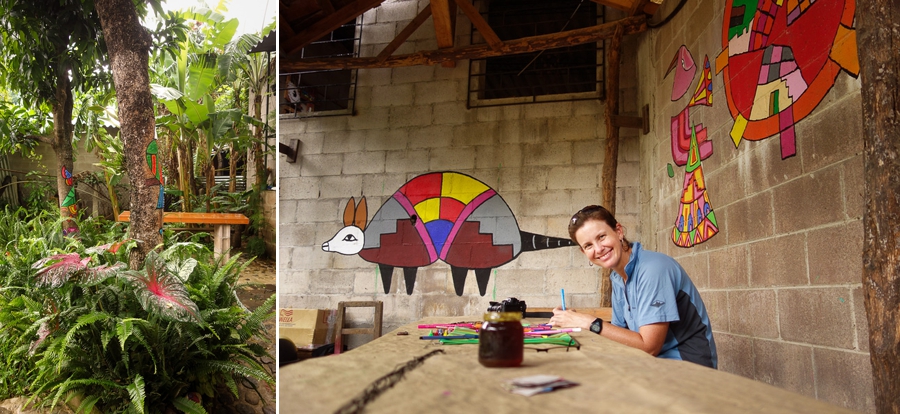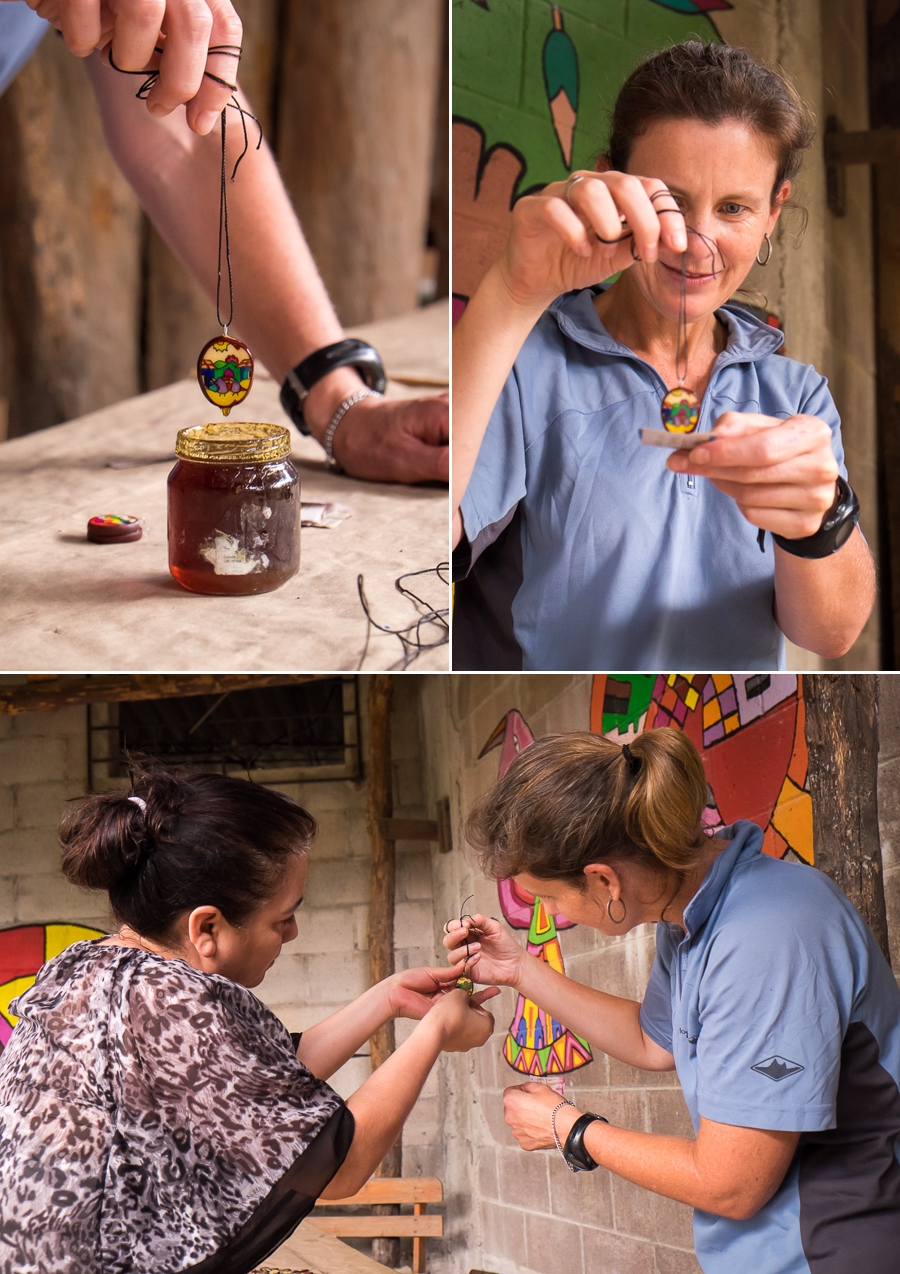Artesanía – souvenir making in La Palma
One of the first things I did in La Palma was ask about the availability of workshops where you could learn/experience a little more about the artesanía and artwork the town is famous for. Turns out, there is only one – at Taller Paty – so I went and had a chat with Estela about what it entailed.

She explained that I had two options – I could either paint a wooden box (typical of a lot of the artesanía that is made from pine wood) or paint a Copinol seed – also very typical and one of the big inspirations for Fernando Llort in his artwork. According to his website:
“Walking through the streets of La Palma, Fernando found a kid rubbing a little seed against the ground, and discovered that it had a white surface with a brown frame, “a framed painting” he thought, and he painted it with very small and colourful drawings.”
I agree with Fernando – the Copinol seeds are very cool, and I actually used one as the accent seed in my bracelet I made with the Mujeres del Plomo near Matagalpa (in Nicaragua it is called Guapinol). So I opted to work with the seed – other advantages being that it was small and could be turned into a necklace 🙂
André arrived the next morning and ended up coming with me to do the artesanía workshop. Estela already had the Copinol seeds cut and drawn with patterns, but she showed us where she works with wood and the seeds out the back of her store. Inside the large light-brown casing are several of the smaller darker-brown seeds which are cut into thirds to produce the surfaces for the paintings.

First step in the workshop was to choose the designs we wanted to paint.

Then we headed out into Estela’s wonderful courtyard, where she has painted artwork onto the besser-brick shelter and even the trees. Although we started out at the bench in the garden, we had to quickly retreat into the shelter as the afternoon downpour started.

Turns out that coloured textas are used to “paint” the Copinol seeds, though actual paint is used for the larger designs on the pinewood boxes. The only “rule” was to avoid the black ink of the design as we coloured in so that it wouldn’t smudge into the colour, but Estela also said that it was traditional to paint the roofs of the houses red.

I ended up making 4 pendants and André 2. We are both analytically inclined so it took us forever to finish our artwork. Estela kept coming out and checking on us — I think she was wondering what was taking us so long! I’m sure she could have knocked out 6 of these things in about 1/10th the amount of time it took us.

The final stage was to dip the pendants in varnish to protect the artwork and make sure the seeds don’t start sprouting when worn! The trick was to ensure that the varnish was evenly distributed over the pendant and there were no drops hanging off the bottom – hence the little squares of newspaper.

Hung around Taller Paty for about 1/2 hour after we’d finished to let the pendants dry a bit and also wait out the storm. Here are my final products – front and back – before the final varnish.

Recommendation: The workshop is lots of fun and Estela is really lovely. Its a great way to make your own very typical and authentic artesanía from El Salvador.
Booking: Ask at the Amigos de las Turistas office and they can point you in the direction of Taller Paty. Its just down the road past the Casa de Cultura.
Time Required: Depends on what you decide to do and how slow you are about your artwork. We were probably there for about 2 hours all up.
Cost: Each of the Copinol seeds were US$2 or 3 for US$5. Absolute bargain, and you have something very typical from El Salvador!
Many thanks to André and Estela for some of the images used in this post (I was too busy colouring in!)
